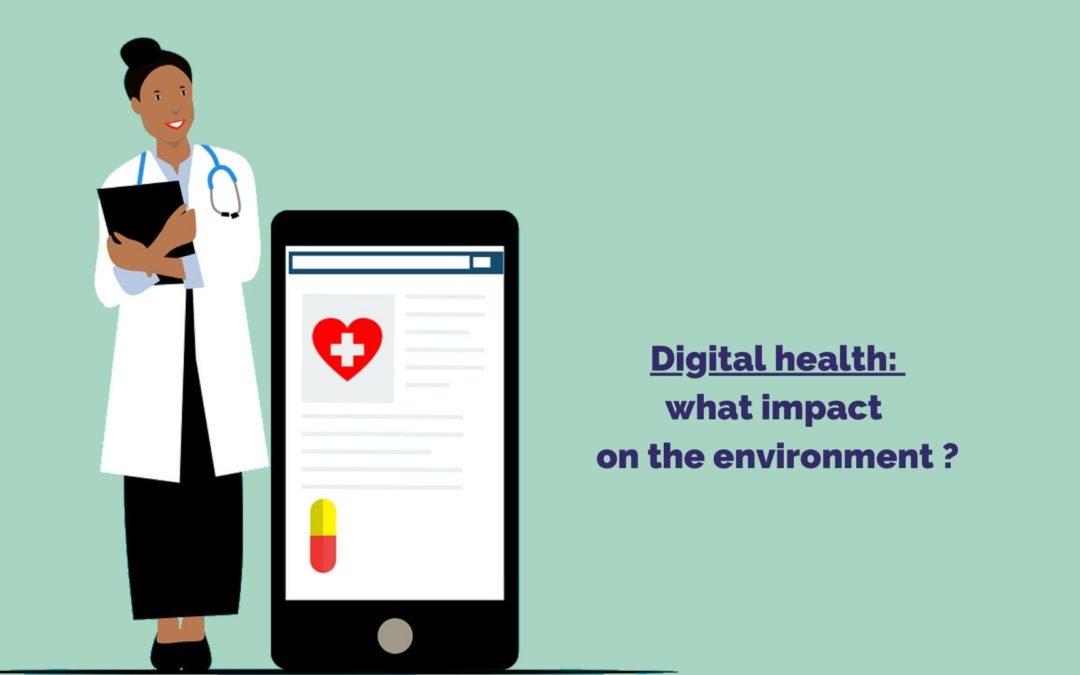This may seem contradictory: on the one hand, digital is responsible for 4% of global greenhouse gas emissions. On the other hand, digitization makes it possible to reduce human activities that are harmful to the environment, such as the use of paper or travel. The digital transformation of the world of health also has an impact on the environment. This is what the report of the interministerial delegation to digital health published in May 2021 and entitled “ The environmental impact of digital health ” highlighted. The appearance of the health crisis in 2020 has accelerated this phenomenon. The advantages for the patient are indisputable and the digitization of the world of health constitutes a major strategic and environmental challenge.
i-Virtual explains everything to you.
Existing digital health solutions
Demographic change, the aging of the population or territorial inequality in access to care are among the major challenges that the health sector must meet. Information and communication technologies (ICT) are an essential solution to achieve this. The issue of what is called E-Health is deployed in multiple areas: telemedicine, patient care records and pathways, information services of health establishments, etc. Solutions have thus been put in place to encourage the return or maintenance of patients in their homes, remote monitoring of chronic diseases, home care, etc.
The “Direction Générale de l’Offre de Soins” (DGOS) created the “digital hospital” program in 2011 in order to modernize hospital information systems. The “Ma Santé 2022” strategy announced in 2018 by Emmanuel Macron aims to promote access to healthcare for all. On February 3, 2022, the government announced the generalization of “Mon Espace santé“, a digital public service constituted in the form of a storage space where each person will be able to find their health data.
One of the major challenges of the digital revolution in the health sector lies in the development of telemedicine. These are all medical acts carried out remotely using information and communication technologies, as defined in article R6316-1 of the Public Health Code. Telemedicine comes in different forms:
- teleconsultation allows a medical professional to remotely give a consultation;
- tele-expertise consists of a health professional remotely seeking the opinion of others doctors because of their training or their particular skills;
- remote monitoring allows a health professional to remotely interpret the data necessary for the medical follow-up of a patient and to make decisions in the interest of the one;
- the purpose of medical teleassistance is to allow a doctor to remotely assist a colleague during the performance of an intervention;
- the medical response corresponds to the call reception and regulation centers set up in the emergency medical aid departments.
As an extension of telemedicine, the Digital Health Agency (formerly the Shared Health Information Systems Agency) created the MSSanté. It is a secure messaging system reserved for health professionals and the medico-social sector. In this context of strong digitization, i-Virtual offers you Caducy, a unique solution in Europe that allows you to control certain vital data such as your heart rate or blood pressure.
The ecological impact of digital health solutions
All players in digital health, users as well as practitioners and manufacturers, are concerned by the impacts of the digital on the environment. The acceleration of the digitization of health has negative effects on the carbon footprint, whether during the manufacture of equipment or during its use. This disadvantage should be compared to the many advantages generated by digitization in order to arrive at a fair balance.
Indeed, the use of digital health has many advantages for the planet, here are a few:
- reduction in transport: by using telemedicine, patients and healthcare professionals limit their movements;
- reduction in the volume of waste: removal of the protection of the examination table at the doctor’s, etc. ;
- zero paper policy: digitization of patient and administrative records, prescriptions;
- end of the use of certain equipment: removal of diaries and dictaphones for doctors. Thanks to checks and examinations carried out via smartphones or tablets, certain physical equipment is less used to take blood pressure, for example. Thanks to Caducy in particular, only a computer, tablet or smartphone is necessary to take your health measurements and discuss with a doctor;
- energy efficiency gains from new equipment, data centers and current networks.
The benefits for the patient should not overshadow a certain impact on the environment. The report “ The environmental impact of digital health ” by the interministerial delegation recommends digital sobriety. This is to optimize the benefit/risk ratio of digital health. The objective is, for example, to design digital services that consume less energy, to manufacture medical equipment with longer lifespans, to moderate daily digital uses, to act on reuse and recycling, to reduce the data collected to those that are strictly necessary, etc. These approaches should be adopted alongside a relevant care policy. Thus, the patient will only be advised to have an operation if it is really essential.
The strong growth of digital in the health sector accelerated in 2020 with the onset of the health crisis. The digital sobriety recommended by the report of the Interministerial Delegation for Digital Health in May 2021 is part of a national desire to reconcile the improvement of care and respect for the environment. The solution, Caducy, is part of this process by allowing you to control certain health data yourself, such as heart rate or respiratory rate.

